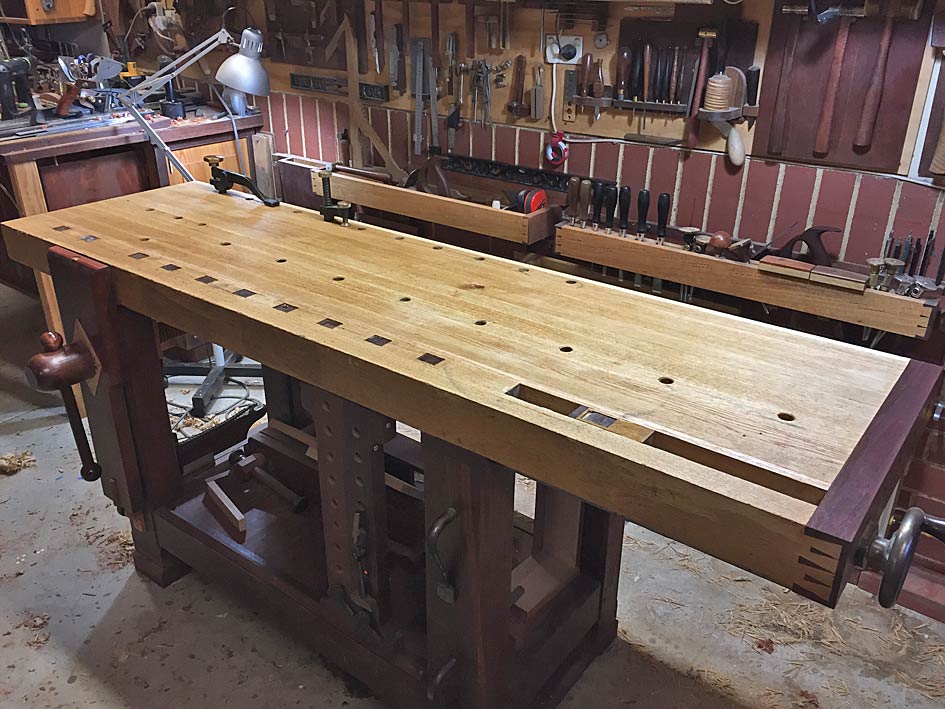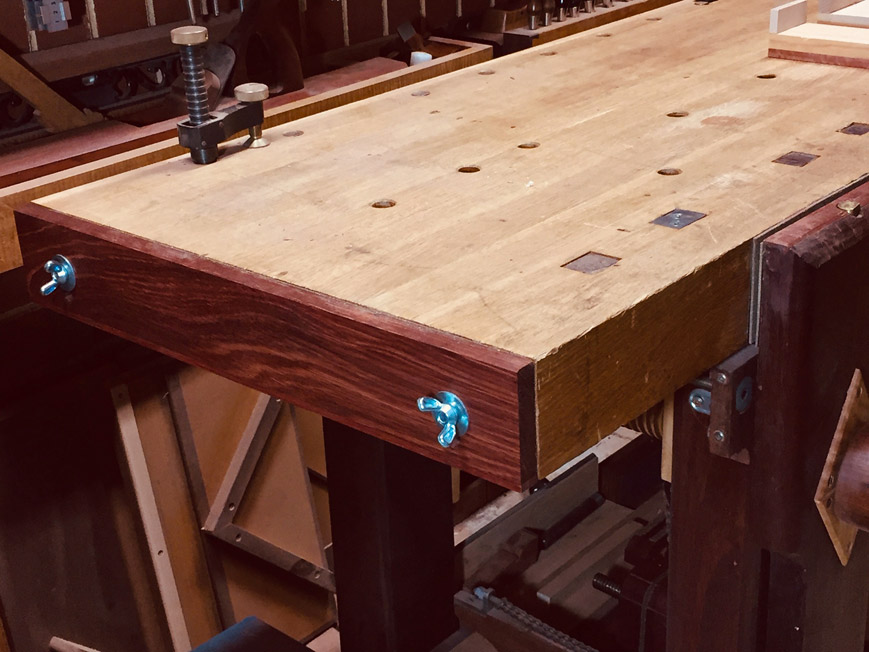My choice would be to choose the hardest of the woods available.
How often do you think you will need to flatten the top?
You could also have a split top bench. Some like this for clamping. My split top bench plan will have a tool tray in the middle with a removable bottom for cleaning and clamping.
With a narrow split in the top a fence can be fit in the slot for a stop when needed.
A v-groove might help keeping pencils and small tools from rolling away.
Pipe clamps are among my favorites. They can use different lengths of pipe for any size project that needs gluing.
jtk
"A pessimist sees the difficulty in every opportunity; an optimist sees the opportunity in every difficulty."
- Sir Winston Churchill (1874-1965)




 Reply With Quote
Reply With Quote
 I have to admit that although I am a guy - father of a 4 year old daughter, I do also drool over baby pictures!
I have to admit that although I am a guy - father of a 4 year old daughter, I do also drool over baby pictures!







